
© Gene Schiavone. (Click image for larger version)
Boston Ballet
Thrill of Contact: Theme and Variations, The Concert (or, The Perils of Everybody), The Vertiginous Thrill of Exactitude, fremd
Boston, Opera House
14, 15, 16 (mat) May 2015
www.bostonballet.org
Boston Ballet closed its season with a generous offering of four ballets spanning almost 70 years: Balanchine’s Theme and Variations (1947), Jeffrey Cirio’s fremd (2015), William Forsythe’s The Vertiginous Thrill of Exactitude (1996), and Jerome Robbins’s The Concert (1956). The second of these was a world premiere and the final two were company premieres.
For many, Balanchine was the supreme artist of the 20th century, and Theme and Variations, set to Tchaikovsky’s music, shows you why. It contains many of the hallmarks of Balanchine’s style (off-balance dancing, interweaving bodies, pyrotechnical speed, a perfect marriage of movement and music) and it’s been a staple of the repertory for so long now that seeing it is like being reunited with an old and cherished friend. The brilliance of the ensemble pieces, the elegance and poignancy of the central pas de deux, the masterful use of the corps, the slow and majestic crescendo at the end moving toward one of the most perfect conclusions in all of ballet – these features are all prominent. Opening night, the leads – Misa Kuranaga and Jeffrey Cirio – were as good as I’ve ever seen. Their dancing was crisp and elegant and effortless, and they were as well coordinated as a Swiss watch. With both, each movement had a clear beginning and end and yet everything flowed; every gesture was given full amplitude; and no matter how fast the tempi, nothing was ever rushed. The result was a richness of execution both amazing and thrilling.

© Gene Schiavone. (Click image for larger version)
In his Introduction to the first edition of Leaves of Grass, Whitman speaks of certain things as “old ever-fresh,” and that phrase, at first sight an oxymoron, in fact describes our sensations in experiencing the greatest art: Masaccio, Vermeer, Bach, Balanchine. “Yes, of course,” we think, experiencing what we’ve known before but now as if for the first time. That freshness guarantees that the work remains a contemporary presence in our lives. Theme and Variations always strikes me that way: a piece of brilliant choreography that is always “old ever-fresh.”
fremd is the first choreographic offering of company principal Jeffrey Cirio. The music is credited to Aphex Twin, Chopin (played by Alex Foaksman), John Field, and Olaf Bender, and we read in the program that Cirio was inspired by the German spoken-word artist Olaf Bender “and his explorations of the concept of the word fremd,” which means “foreign, alien, strange, or different.” These words suit the three couples who, upon first appearing, are like extra-terrestrials with disarticulating bodies trying in slow motion to penetrate a human dimension. In fact the costumes (shorts and loose tops with regimental markings) are very Star Trek, and the seventh dancer in loose orange pants, our principal alien, seemed a kind of spaceship control room sending choreographic signals to the others. When I add that the sources for Cirio’s choreography include William Forsythe, Jorma Elo, and Jiri Kylian, and that part of the score is accompanied by a German monologue which perhaps five percent of the audience understood, you might think this is just another piece of contemporary pretension. It’s far better and more interesting than that.

© Gene Schiavone. (Click image for larger version)
I’m not sure I understand the piece, but then understanding often arrives last in the process of aesthetic enjoyment. I definitely liked it the more I saw it. It has intelligence and invention, some very beautiful movement, and it’s pleasing that the couples often perform identically, while their twitching hands and spastic movements are expressive rather than adventitious. When the alien gingerly tiptoed from puddle to puddle at the end and then disappeared into the dark, the audience went wild. Lia Cirio was first among equals in an excellent cast and Altan Dugaraa was a persuasive alien.
William Forsythe is a very famous and very polarizing choreographer: you love him or you hate him. A friend saw one of his pieces a couple of years ago but couldn’t recall its name. “What was it about” I asked. “The collapse of the Berlin Wall or sea gulls dying of toxic sludge, I’m not sure which.” And so on to reviewing Forsythe’s Vertiginous Thrill of Exactitude.
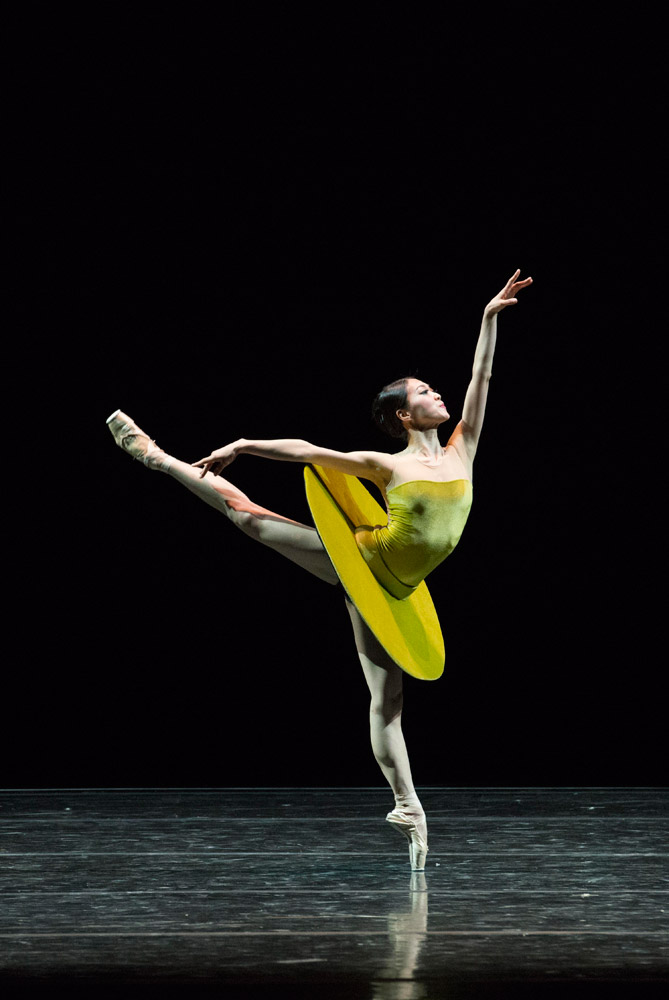
© Gene Schiavone. (Click image for larger version)
Two men in tight purple shorts and tops and three women in flat lime green tutus (quite ugly costumes) dance non-stop to the final movement of Schubert’s Symphony #9. In a way, the piece is an anthology of ballet tweaked á la moderne and rendered at lightning speed. We see duos, trios, quartets, and quintets and then rapid permutations of them all. Partners change so often it’s hard to speak of individual couples, and the rhythm is so relentless it makes human communication virtually impossible. It’s a dazzling piece of energy and imagination, but rather like being introduced to someone in the middle of a hundred yard dash. On the rare occasions when a dancer freezes in position for a second or two, you feel great relief. I always enjoy it but find it somewhat soulless. Jeffrey Cirio and John Lam were the best male pair of the three casts I saw, joined by three of the best women in the company: Kathleen Breen Combes, Erica Cornejo, and Misa Kuranaga.
For those who’ve never seen Jerome Robbins’s The Concert, widely considered the funniest ballet ever created, it’s a witty taxonomy of human foibles displayed at a concert of Chopin’s piano music (played here by Freda Locker). We have the swooning lady aesthete, a timid guy who ends up without a seat, a bossy lady and her cigar-chomping lug, et al. We first see the responses of these people as they learn they’re all in the wrong seats. When the aesthete’s chair is removed (she’s been hugging the piano), she remains cantilevered in position, her derriere poised in mid-air.

© Gene Schiavone. (Click image for larger version)
Much of the piece spoofs the conventions of classical ballet. Thus, six women perform a version of Les Sylphides and get almost everything wrong with hilarious results. In another vignette, the aesthete buys the perfect hat and struts out of the shop only to encounter another woman wearing the identical hat. A man diffidently opens an umbrella; when others arrive and see him, they open theirs. A crowd soon clusters, finally gathering under a single umbrella, whereupon a woman closes it and everyone disperses. (Monkey see, monkey do.) In the final scene, the aesthete and the lug, transformed into butterflies, perform a mating dance and the stage is soon given over to a congeries of frantic butterflies. Finally, the pianist, huge net in hand, starts hunting them down. The opening night cast was peerless, with Ashley Ellis as the Aesthete and Dusty Button and Lasha Khozashvili as the mismatched couple. Who knew that these three dancers had such comic gifts!
For the most part this has been a great season for Boston Ballet, so congratulations to Artistic Director Mikko Nissinen, his many extraordinary dancers and, of course, Music Director Jonathan McPhee.











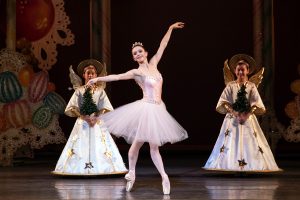
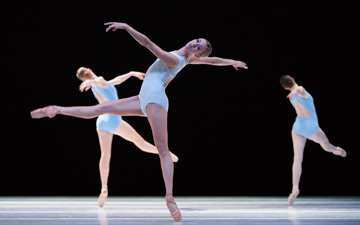
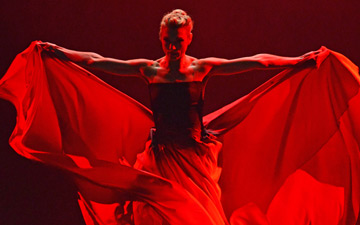
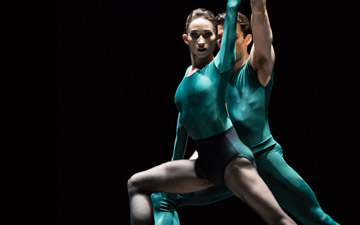

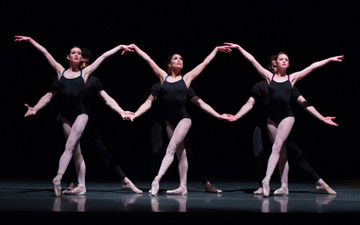
You must be logged in to post a comment.